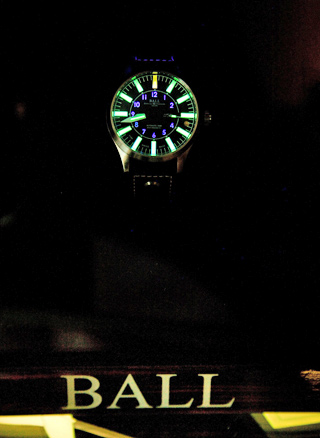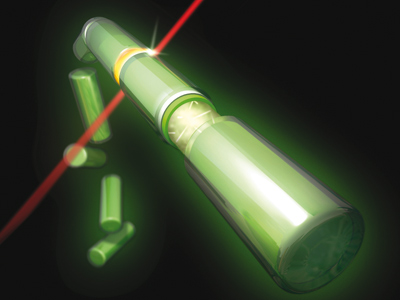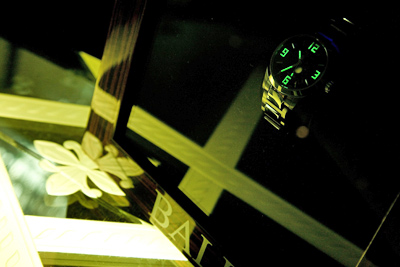The problem of telling time in the dark dates back to the very early days of civilization. In many villages and hamlets, people had no choice but to use a sundial during the daylight hours and a graduated candle at night. Both systems had their flaws – the time told by a sundial varies during the year, while the precision of the latter, a fairly costly system consisting of candles said to burn at a consistent rate, was not very good.

With Ball Watch timepieces, you can read the time precisely and clearly in broad daylight or at night, while on the go or in the comfort of your sofa. Easy legibility is one of Ball Watch's mottos and has been from the very outset, when its founder, Webb C. Ball, established very exacting legibility standards as early as 1891. Now, the brand's dials and hands have been fitted with gas tubes which enable the time to be read under all circumstances, even in the most extreme conditions.
Self-powered micro gas lights (3H)
The Ball solution to the problem of reading time in the dark is the Self-Powered Micro Gas Lights (3H). It is a novel light source manufactured by means of an innovative Swiss laser technology. This technology safely captures pure tritium gas in a mineral glass tube coated with luminescent material. The light is produced when the electrons of the tritium strike the luminous phosphors on the inside of the glass. Our 3H micro gas lights glow up to 100 times brighter than luminous paints for up to 25 years. They do not require charging from any outside light source or power source. The encapsulated tritium gas poses no risk to the wearer over the life of the watch and enables the wearer to read the watch quickly and safely in brightest daylight or deepest night without waiting for his eyes to adapt to the ambient light.

The long road to today's technology was taken in three stages spanning several decades. This third stage state-of-the-art technology permits a 100-fold increase in brightness, combined with 100-fold reduction of the irradiation risk to an absolutely negligible level. The U.S. military has long recognized the advantages of micro gas light sources and their use is specified in procurement specification MIL-W-46374F.
Unlimited inspiration
With exceptional craftsmanship, our talented watchmakers affix every tiny, delicate gas light on the dials and hands to create the Ball Watch signature design. Just as what we always do to go beyond imagination, our designers make use of the various sizes, shapes and colors of the gas lights to build an array of collections, each with its own unique style. One of the most important breakthroughs is the patented illuminated calendar (Patent pending Nr. 10-307,059). Inspired by the brand's strong railroad heritage, the “Moon Glow” pioneering design enables the wearer to clearly read not only the time but also the date under the darkest environment. In the 1947 Train of Tomorrow, the “Moon Glow” was an observation car built for friendly relaxation in a cozy environment that provided a magnificent view of the landscape, particularly at night when the moon was visible through its wide windows and clear roof.

Optimum safety
Man is exposed to natural radiation arising from the earth as well as from outer space. On average, our yearly radiation exposure from natural sources amounts to about 2.4 mSv, though figures vary depending on geography. The wearer of an intact Ball Watch is never exposed to any radiation. In fact, even if all 3H tubes were to break simultaneously, the estimated radiation dosage would be 30,000 times lower than the average background radiation. The extremely light hydrogen gas quickly dissipates into the air. Thus, it is evident that it does not make sense to speak of a radiation risk when wearing a Ball Watch.






